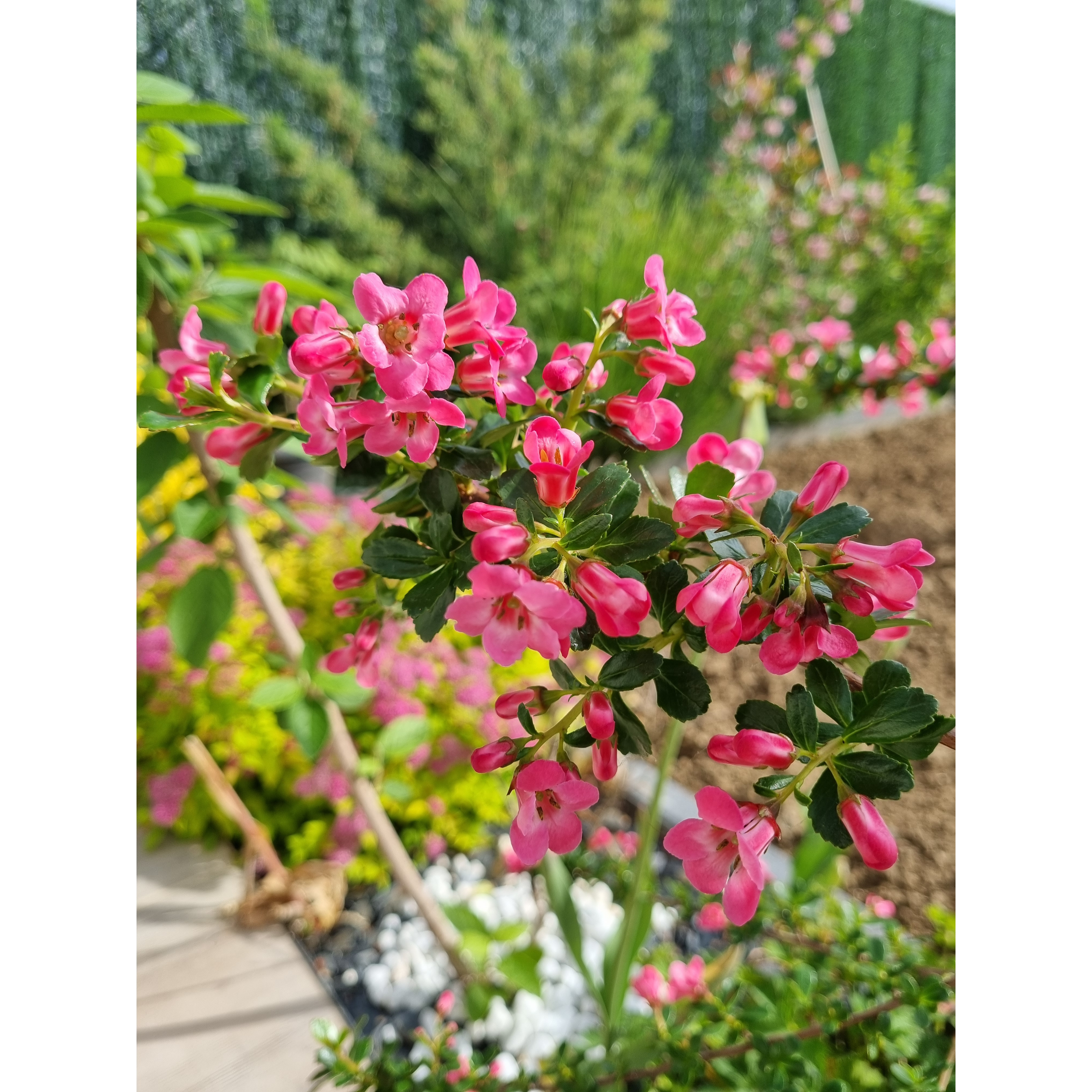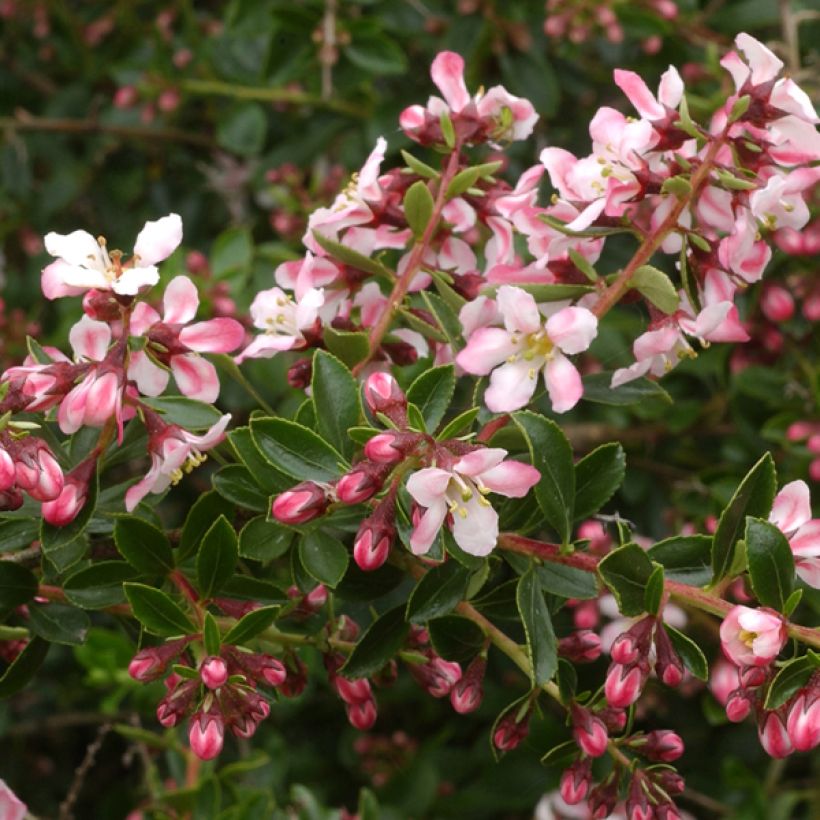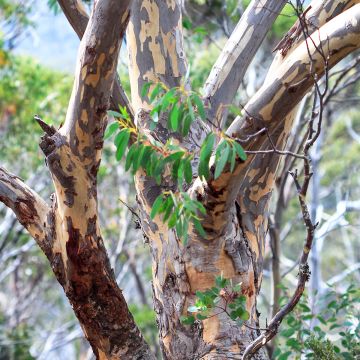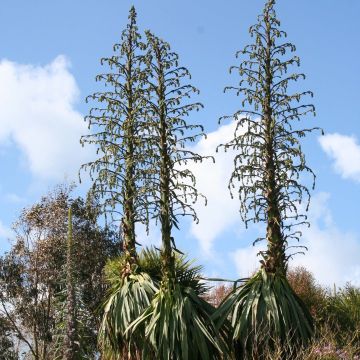

Escallonia virgata Apple Blossom


Escallonia virgata Apple Blossom
View more pictures
Hide images

Sophie L.

Sophie L. • 91 FR

Sophie L.

Lovely flowering.
Sophie L. • 91 FR
Escallonia virgata Apple Blossom
Escallonia x virgata Apple Blossom
Redclaws
Planted in April 2024, it has settled in well and decided to flower this autumn instead of this summer. However, the flowers are entirely pink. We'll see during the next flowering.
Jessica, 17/11/2024
Special offer!
Receive a €20 voucher for any order over €90 (excluding delivery costs, credit notes, and plastic-free options)!
1- Add your favorite plants to your cart.
2- Once you have reached €90, confirm your order (you can even choose the delivery date!).
3- As soon as your order is shipped, you will receive an email containing your voucher code, valid for 3 months (90 days).
Your voucher is unique and can only be used once, for any order with a minimum value of €20, excluding delivery costs.
Can be combined with other current offers, non-divisible and non-refundable.
Why not try an alternative variety in stock?
View all →This plant carries a 24 months recovery warranty
More information
We guarantee the quality of our plants for a full growing cycle, and will replace at our expense any plant that fails to recover under normal climatic and planting conditions.

Would this plant suit my garden?
Set up your Plantfit profile →
Description
If Escallonia 'Apple Blossom' is not more widely planted in gardens, it is probably due to its mediocre hardiness, around -10 °C (14 °F). And that is its only flaw. Very ornamental and truly undemanding in terms of soil and water, this evergreen shrub displays its beautifully rounded, very well-groomed silhouette, and is adorned throughout the summer, without interruption, with a multitude of charming little pink and white flowers, clustered among its tough, dark green foliage. Widely used as a hedge by the seaside, this shrub is also a boon for dry gardens, too often deprived of flowers in summer.
Escallonia Apple Blossom is a horticultural creation born in Northern Ireland, from the cross-breeding of E. virgata and E. rubra var. macrantha, two species native to South America, particularly Chile and Argentina.
The 'Apple Blossom' variety forms a ramified bush with a bushy and rounded habit, of medium growth, which will reach about 1.5 m (4 ft 11 in) in height at maturity and 1 m (3 ft 4 in) in width. Its small leaves, 2.5 cm (1 in) long, are tough, alternate, ovate, with dentate edges and of a shiny dark green colour. They are densely arranged, a little stiff, along almost the entire length of the branches. Flowering takes place from June-July to September, more or less early depending on the climate, without interruption. At the end of each branching, a cluster of 3 to 10 cm (1.2 to 3.9 in) is born, composed of small five-petaled flowers, in the shape of tender pink and white bells, enclosed at the base in a red calyx.
Escallonia Apple Blossom, an excellent shrub for contrasting and enhancing white or pink roses, only fears icy winds and cold winters. It is not afraid of heat, dry summers once established, or limestone soils, and manages to flower even in hot or shaded situations. It is useful in seaside gardens, as its flowering, just like that of Olearias, brightens up the grey foliage of Atriplex, Bupleurum fruticosum, or Correa alba rosea for example. In a large flower bed, it can be combined with cistus, lavender, Hebe or with spring-flowering shrubs such as lilacs, Kolkwitzia amabilis or deutzias.
Escallonia virgata Apple Blossom in pictures




Plant habit
Flowering
Foliage
Botanical data
Escallonia
x virgata
Apple Blossom
Escalloniaceae
Redclaws
Cultivar or hybrid
Planting and care
Escallonia Apple Blossom is preferably planted in spring, or in autumn in very mild climates. It requires well-drained, fresh, slightly acidic, neutral, or even limestone soil, in a sheltered and warm location. It blooms more abundantly in the sun, but tolerates shady exposures well. Once established, it requires no watering in summer, even in dry climates. It can withstand sea spray but not cold winter winds. If your soil is very poor, you can optionally apply a rose fertiliser in spring. Prune to balance the shape in February and September. It dislikes heavy soils and fears stagnant moisture, especially in winter. If the soil is too heavy and limestone, it may suffer from chlorosis; if that is the case, apply a dose of sequestrine every year in spring. Practice pruning to one-third of their height in the first few years during their establishment so that the shrub develops a dense and compact habit. You can also prune it into a ball shape. In colder regions, plant it in a location protected from prevailing winds, south-facing against a wall or west-facing in the back of a bed or in a hedge, and mulch the base in winter. If your escallonia has frozen in winter, it is likely to regrow from the base in spring.
Planting period
Intended location
Care
Planting & care advice
-
, onOrder confirmed
Reply from on Promesse de fleurs
Similar products
Haven't found what you were looking for?
Hardiness is the lowest winter temperature a plant can endure without suffering serious damage or even dying. However, hardiness is affected by location (a sheltered area, such as a patio), protection (winter cover) and soil type (hardiness is improved by well-drained soil).

Photo Sharing Terms & Conditions
In order to encourage gardeners to interact and share their experiences, Promesse de fleurs offers various media enabling content to be uploaded onto its Site - in particular via the ‘Photo sharing’ module.
The User agrees to refrain from:
- Posting any content that is illegal, prejudicial, insulting, racist, inciteful to hatred, revisionist, contrary to public decency, that infringes on privacy or on the privacy rights of third parties, in particular the publicity rights of persons and goods, intellectual property rights, or the right to privacy.
- Submitting content on behalf of a third party;
- Impersonate the identity of a third party and/or publish any personal information about a third party;
In general, the User undertakes to refrain from any unethical behaviour.
All Content (in particular text, comments, files, images, photos, videos, creative works, etc.), which may be subject to property or intellectual property rights, image or other private rights, shall remain the property of the User, subject to the limited rights granted by the terms of the licence granted by Promesse de fleurs as stated below. Users are at liberty to publish or not to publish such Content on the Site, notably via the ‘Photo Sharing’ facility, and accept that this Content shall be made public and freely accessible, notably on the Internet.
Users further acknowledge, undertake to have ,and guarantee that they hold all necessary rights and permissions to publish such material on the Site, in particular with regard to the legislation in force pertaining to any privacy, property, intellectual property, image, or contractual rights, or rights of any other nature. By publishing such Content on the Site, Users acknowledge accepting full liability as publishers of the Content within the meaning of the law, and grant Promesse de fleurs, free of charge, an inclusive, worldwide licence for the said Content for the entire duration of its publication, including all reproduction, representation, up/downloading, displaying, performing, transmission, and storage rights.
Users also grant permission for their name to be linked to the Content and accept that this link may not always be made available.
By engaging in posting material, Users consent to their Content becoming automatically accessible on the Internet, in particular on other sites and/or blogs and/or web pages of the Promesse de fleurs site, including in particular social pages and the Promesse de fleurs catalogue.
Users may secure the removal of entrusted content free of charge by issuing a simple request via our contact form.
The flowering period indicated on our website applies to countries and regions located in USDA zone 8 (France, the United Kingdom, Ireland, the Netherlands, etc.)
It will vary according to where you live:
- In zones 9 to 10 (Italy, Spain, Greece, etc.), flowering will occur about 2 to 4 weeks earlier.
- In zones 6 to 7 (Germany, Poland, Slovenia, and lower mountainous regions), flowering will be delayed by 2 to 3 weeks.
- In zone 5 (Central Europe, Scandinavia), blooming will be delayed by 3 to 5 weeks.
In temperate climates, pruning of spring-flowering shrubs (forsythia, spireas, etc.) should be done just after flowering.
Pruning of summer-flowering shrubs (Indian Lilac, Perovskia, etc.) can be done in winter or spring.
In cold regions as well as with frost-sensitive plants, avoid pruning too early when severe frosts may still occur.
The planting period indicated on our website applies to countries and regions located in USDA zone 8 (France, United Kingdom, Ireland, Netherlands).
It will vary according to where you live:
- In Mediterranean zones (Marseille, Madrid, Milan, etc.), autumn and winter are the best planting periods.
- In continental zones (Strasbourg, Munich, Vienna, etc.), delay planting by 2 to 3 weeks in spring and bring it forward by 2 to 4 weeks in autumn.
- In mountainous regions (the Alps, Pyrenees, Carpathians, etc.), it is best to plant in late spring (May-June) or late summer (August-September).
The harvesting period indicated on our website applies to countries and regions in USDA zone 8 (France, England, Ireland, the Netherlands).
In colder areas (Scandinavia, Poland, Austria...) fruit and vegetable harvests are likely to be delayed by 3-4 weeks.
In warmer areas (Italy, Spain, Greece, etc.), harvesting will probably take place earlier, depending on weather conditions.
The sowing periods indicated on our website apply to countries and regions within USDA Zone 8 (France, UK, Ireland, Netherlands).
In colder areas (Scandinavia, Poland, Austria...), delay any outdoor sowing by 3-4 weeks, or sow under glass.
In warmer climes (Italy, Spain, Greece, etc.), bring outdoor sowing forward by a few weeks.


























































